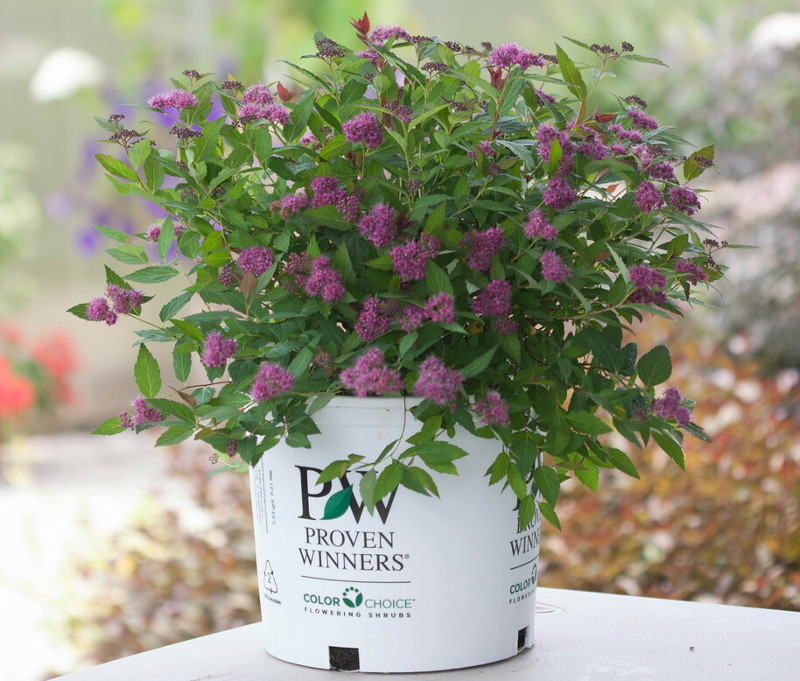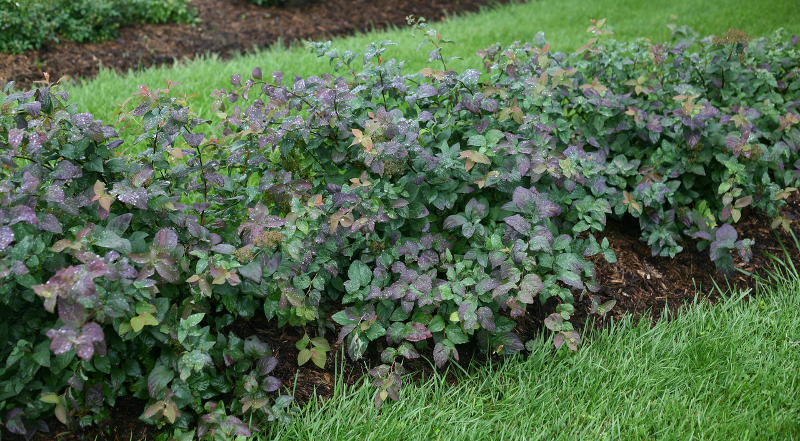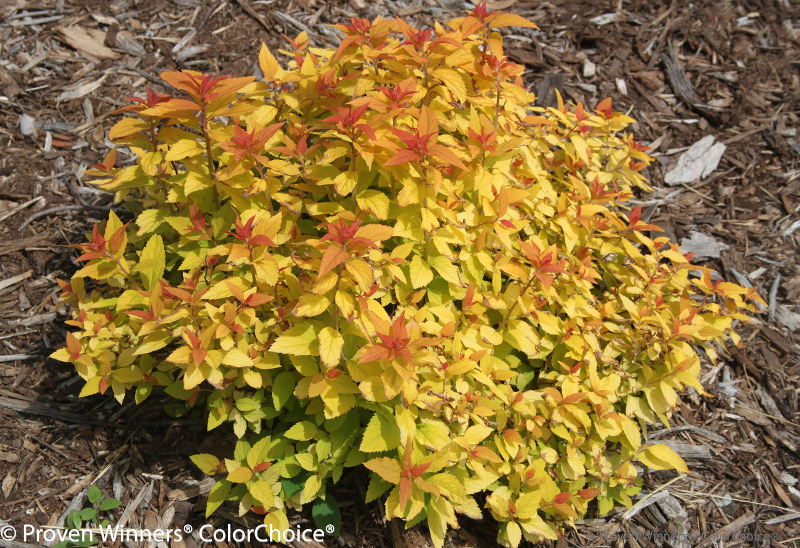Spirea (spiraea) is a genus with about 80 to 100 species in the family Rosacea. This deciduous shrub is native to North America and Asia. Common names include meadowsweet and steeplebush. This hardy shrub is tolerant to heat, drought, cold, and humid conditions. Plant Spirea in full sun to achieve the best foliage and flower colors. This woody shrub likes to be planted in the spring or fall in soil that is well draining.

What You Need To Plant Spirea
- Shovel
- Compost or manure
- Garden spade
- Garden shears
- Saw (if dividing the shrub)
Where to Plant Spirea
Spirea can tolerate most soil types as long as it is well draining. Choose a location that will get at least 6 hours of full sun each day. Good sunlight helps with vibrant blooms and colorful fall foliage. When planting, dig a hole two times as wide as the root ball and a bit deeper than the root ball. Be sure to select an area that will support the shrub’s mature size.

Spirea Spacing
Depending on the variety, Spirea can grow from 1 to 8 feet tall and up to 6 feet wide. It is important to consider the shrub’s mature size when deciding where to plant it as this shrub can end up very wide as it grows.

Planting a wide spreading plant too close to the foundation of a building or home can cause serious issues down the road. A medium sized shrub should be planted at least 3 feet from the structure; whereas, a tall shrub should be planted at least 5 feet away. Space each plant 2 to 15 feet apart from each other or other plants. Again, this is according to mature size.
Refer to the plant’s label for exact mature size and spacing recommendations. Spirea is great as a focal plant when planted alone. Group several Spirea together to create a hedge, screen or border. Be sure to leave plenty of room to spread out and fill in the area as they grow.
Steps To Plant Spirea
Each Spirea shrub should be spaced out based on the mature size of the shrub. This can be anywhere from 2 to 15 feet between each plant, depending on the variety.
- Dig a hole 2 times wider than the root ball and slightly deeper.
- Loosen the soil around the root ball releasing the roots.
- Mix some compost or fertilizer in the planting hole.
- Place the plant in the hole with the root ball at or just above the soil level.
- Fill the hole with soil, patting down lightly to remove air pockets.
- Water well and add mulch around the base of the plant.
When to Plant Spirea
Some varieties of Spirea are spring blooming and some varieties are summer blooming. All species of Spirea are woody shrubs. The best time to plant woody shrubs is in the spring or fall. We recommend planting shrubs on an overcast day and/or early or late in the day. This will be less stress for the shrub as you disturb it while planting.
Avoid planting during sunny days or during the hottest parts of the day. This will stress out the plant. If you find that your shrub is stressed out from planting, give it extra water after moving it and for the following next few days.
Transplanting Spirea
Transplanting an established Spirea bush is not difficult, but it can get tricky depending on the size of the shrub. Spirea can grow from 1 to 8 feet tall and up to 6 feet wide. Depending on the size, you may have to prune some branches near the base of the plant to expose the trunk. The root ball will need to be dug up.
Again, the size of the shrub will determine how wide and deep the root ball will be. Depending on if your Spirea is 24 inches tall or 6 feet tall, the root ball should be anywhere from 12 inches wide and 9 inches deep to 20 inches wide and 14 inches deep.
Once you free the root ball, replant it in the prepared hole as soon as possible so the shrub does not dry out. An extra large Spirea can be divided into two new plants. Once the root ball is removed, use sharp pruning shears or a saw to split the trunk.
Once replanted, trim any damaged or unwanted branches. Wait until fall to move the shrub. Waiting until after the leaves drop is an even better time. Spirea can also be propagated with softwood cuttings, hardwood cuttings, or through ground layering.

 |
Author Chris Link - Published 10-19-2021 |
